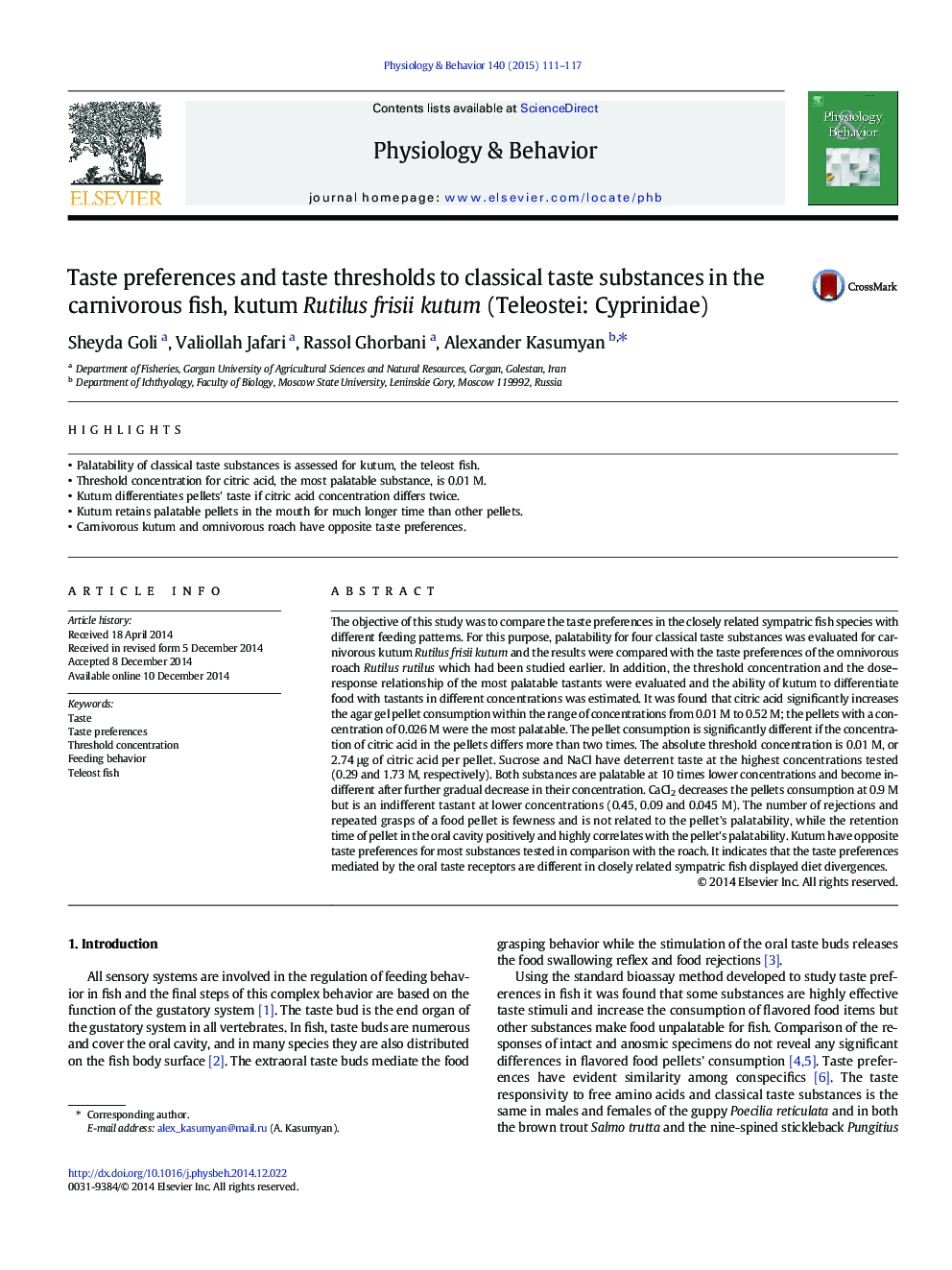| Article ID | Journal | Published Year | Pages | File Type |
|---|---|---|---|---|
| 5923820 | Physiology & Behavior | 2015 | 7 Pages |
Abstract
The objective of this study was to compare the taste preferences in the closely related sympatric fish species with different feeding patterns. For this purpose, palatability for four classical taste substances was evaluated for carnivorous kutum Rutilus frisii kutum and the results were compared with the taste preferences of the omnivorous roach Rutilus rutilus which had been studied earlier. In addition, the threshold concentration and the dose-response relationship of the most palatable tastants were evaluated and the ability of kutum to differentiate food with tastants in different concentrations was estimated. It was found that citric acid significantly increases the agar gel pellet consumption within the range of concentrations from 0.01 M to 0.52 M; the pellets with a concentration of 0.026 M were the most palatable. The pellet consumption is significantly different if the concentration of citric acid in the pellets differs more than two times. The absolute threshold concentration is 0.01 M, or 2.74 μg of citric acid per pellet. Sucrose and NaCl have deterrent taste at the highest concentrations tested (0.29 and 1.73 M, respectively). Both substances are palatable at 10 times lower concentrations and become indifferent after further gradual decrease in their concentration. CaCl2 decreases the pellets consumption at 0.9 M but is an indifferent tastant at lower concentrations (0.45, 0.09 and 0.045 M). The number of rejections and repeated grasps of a food pellet is fewness and is not related to the pellet's palatability, while the retention time of pellet in the oral cavity positively and highly correlates with the pellet's palatability. Kutum have opposite taste preferences for most substances tested in comparison with the roach. It indicates that the taste preferences mediated by the oral taste receptors are different in closely related sympatric fish displayed diet divergences.
Related Topics
Life Sciences
Biochemistry, Genetics and Molecular Biology
Physiology
Authors
Sheyda Goli, Valiollah Jafari, Rassol Ghorbani, Alexander Kasumyan,
